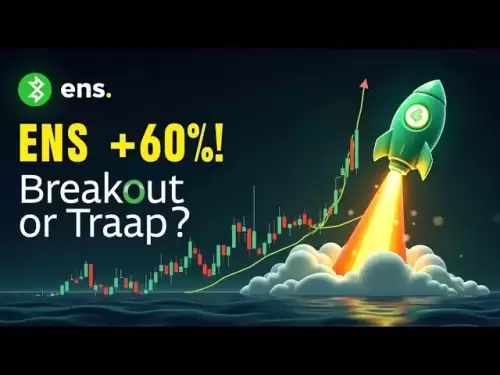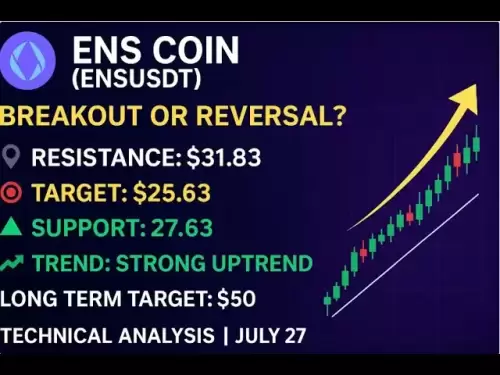-
 Bitcoin
Bitcoin $117900
0.31% -
 Ethereum
Ethereum $3766
0.28% -
 XRP
XRP $3.176
-0.31% -
 Tether USDt
Tether USDt $1.000
0.00% -
 BNB
BNB $795.6
1.51% -
 Solana
Solana $186.8
-1.09% -
 USDC
USDC $0.9999
-0.01% -
 Dogecoin
Dogecoin $0.2353
-1.33% -
 TRON
TRON $0.3226
1.49% -
 Cardano
Cardano $0.8172
-1.08% -
 Sui
Sui $4.178
3.06% -
 Hyperliquid
Hyperliquid $43.05
-3.39% -
 Stellar
Stellar $0.4367
-0.57% -
 Chainlink
Chainlink $18.62
1.47% -
 Hedera
Hedera $0.2828
6.63% -
 Bitcoin Cash
Bitcoin Cash $584.7
5.65% -
 Avalanche
Avalanche $24.81
2.53% -
 Litecoin
Litecoin $112.8
-0.88% -
 UNUS SED LEO
UNUS SED LEO $8.975
-0.08% -
 Shiba Inu
Shiba Inu $0.00001395
-1.07% -
 Toncoin
Toncoin $3.285
-1.05% -
 Ethena USDe
Ethena USDe $1.001
0.01% -
 Polkadot
Polkadot $4.123
0.76% -
 Uniswap
Uniswap $10.49
-0.18% -
 Monero
Monero $326.5
0.14% -
 Dai
Dai $0.9999
-0.02% -
 Bitget Token
Bitget Token $4.576
0.34% -
 Pepe
Pepe $0.00001247
-1.55% -
 Cronos
Cronos $0.1400
3.77% -
 Aave
Aave $295.1
-0.73%
Which exchanges offer the best USDT purchase prices?
To find the best USDT purchase price, compare rates across reputable exchanges, considering liquidity, fees, and security, as prices can vary slightly.
Mar 27, 2025 at 09:21 pm
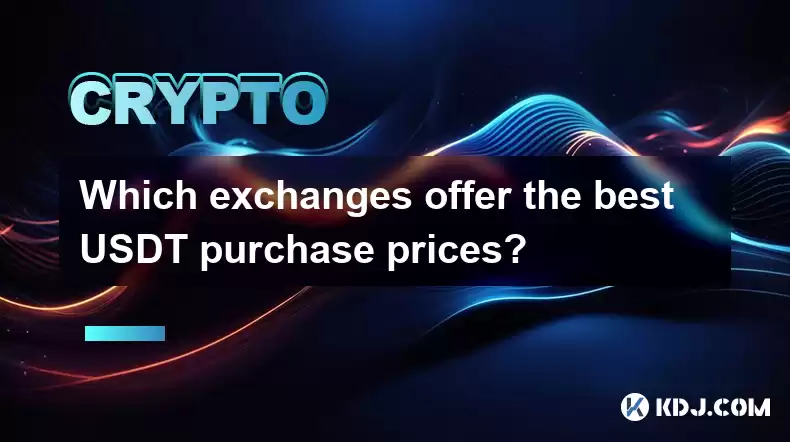
Finding the Sweet Spot: Navigating USDT Purchase Prices Across Exchanges
The price of Tether (USDT), a stablecoin pegged to the US dollar, fluctuates slightly across different cryptocurrency exchanges. While the variations are usually minimal, understanding these differences can save you money, especially when purchasing large amounts. Several factors influence these price discrepancies, including trading volume, liquidity, and the exchange's own fees. Finding the best price requires diligent comparison and understanding of the market dynamics.
Many factors contribute to price discrepancies. Liquidity plays a crucial role; exchanges with high trading volume for USDT pairs generally offer tighter spreads and better prices. Trading fees also impact the final cost. Some exchanges charge higher fees than others, effectively increasing the purchase price. Regional regulations can influence pricing as well, with some jurisdictions experiencing higher demand and therefore potentially higher prices. Finally, the specific trading pair you use (e.g., USDT/USD, USDT/BTC) can impact the price you see.
To find the best USDT purchase price, you need a multi-pronged approach. First, you should identify several reputable exchanges known for their security and liquidity. This research is crucial to avoid scams and ensure a smooth transaction. Next, you'll want to compare the current USDT prices across those exchanges. Websites and tools dedicated to cryptocurrency price comparison can greatly simplify this process. Remember to factor in any fees charged by the exchange.
It's important to note that the best exchange for you might not always offer the absolute lowest price. Consider other factors like:
- Ease of use: Some exchanges have more user-friendly interfaces than others.
- Security measures: Prioritize exchanges with robust security protocols.
- Deposit/withdrawal methods: Choose an exchange that supports your preferred payment methods.
- Customer support: Reliable customer support is invaluable in case of any issues.
Let's explore some examples of exchanges known for competitive USDT pricing. Keep in mind that prices constantly change, so this is not an exhaustive or definitive list, and it's vital to check current prices before making any purchase. Binance, for instance, often boasts high liquidity and competitive pricing, but its interface can be overwhelming for beginners. Coinbase, on the other hand, is user-friendly but might have slightly higher fees. Kraken is another popular choice with a strong reputation for security. Smaller, regional exchanges might also offer attractive prices, but thorough due diligence is crucial.
Always remember to check the current price on multiple exchanges before making a purchase. This simple step can save you money over time. Don't solely focus on the initial price; remember to consider all associated fees, including deposit and withdrawal fees. Some exchanges offer promotional periods with reduced fees, so keeping an eye out for these opportunities can also be beneficial.
Beyond the major exchanges, you might find slightly better prices on decentralized exchanges (DEXs). However, DEXs often require a more technical understanding and can be less user-friendly. They also might have lower liquidity for USDT compared to centralized exchanges. The trade-off is potentially better pricing for those comfortable navigating the complexities of DEXs.
Utilizing price aggregation websites can streamline the comparison process. These websites collect price data from various exchanges, allowing you to quickly identify the best offer. However, always double-check the information on the exchange itself before completing your purchase, as prices can change rapidly.
The purchase process itself will vary depending on the chosen exchange. Generally, it involves:
- Creating an account and verifying your identity.
- Funding your account with your chosen payment method.
- Placing an order for USDT.
- Transferring the USDT to your desired wallet (if necessary).
Remember, security should always be your top priority. Use strong passwords, enable two-factor authentication (2FA), and be wary of phishing scams. Never share your private keys or seed phrases with anyone. Choose exchanges with a proven track record of security and a strong reputation.
Choosing the "best" exchange is subjective and depends on individual needs and priorities. There's no single answer to which exchange consistently offers the absolute lowest price. The key is to actively compare prices across multiple reputable exchanges, considering fees and security measures, to find the option that best suits your circumstances.
Frequently Asked Questions
Q: Are there any risks associated with purchasing USDT on different exchanges?
A: Yes, the primary risks include exchange security vulnerabilities and scams. Always choose reputable exchanges with strong security measures. Another risk is price volatility, although with USDT, these fluctuations are typically minimal.
Q: How often should I compare USDT prices across exchanges?
A: It's advisable to compare prices before each purchase, as prices can fluctuate throughout the day. Using price aggregation websites can simplify this process.
Q: What payment methods are typically accepted for USDT purchases?
A: Common methods include credit/debit cards, bank transfers, and other cryptocurrencies. The accepted methods vary across exchanges.
Q: What are the typical fees associated with purchasing USDT?
A: Fees vary by exchange and payment method. They typically include trading fees, deposit fees, and potentially withdrawal fees. Always check the fee schedule before making a purchase.
Q: Is it safe to store USDT on an exchange?
A: While convenient, storing large amounts of USDT on an exchange carries security risks. Consider transferring your USDT to a secure personal wallet after purchase.
Disclaimer:info@kdj.com
The information provided is not trading advice. kdj.com does not assume any responsibility for any investments made based on the information provided in this article. Cryptocurrencies are highly volatile and it is highly recommended that you invest with caution after thorough research!
If you believe that the content used on this website infringes your copyright, please contact us immediately (info@kdj.com) and we will delete it promptly.
- Cryptos to Watch in 2025: Punisher Coin, Chainlink, and the Altcoin Arena
- 2025-07-27 18:30:13
- Bitcoin, Altcoins, Rebound: Navigating the Crypto Comeback Trail
- 2025-07-27 18:30:13
- Ethereum, Bitcoin, and Altcoins: A Shift in Crypto Tides?
- 2025-07-27 19:10:13
- Windtree Therapeutics' Bold BNB Strategy: A $520 Million Crypto Play
- 2025-07-27 19:10:13
- Solana, Staking, and Unilabs: What's the Buzz in the Crypto Space?
- 2025-07-27 16:50:13
- VeChain, HBAR, Remittix: Navigating the Crypto Landscape in 2025
- 2025-07-27 17:10:12
Related knowledge
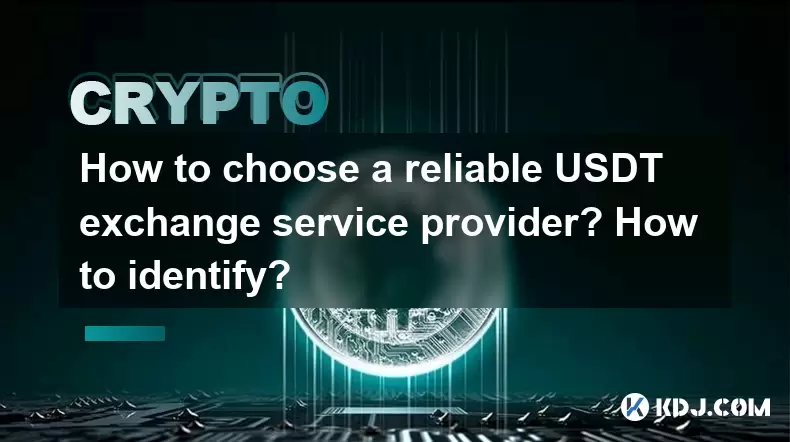
How to choose a reliable USDT exchange service provider? How to identify?
Jun 12,2025 at 03:15pm
Understanding the Role of USDT in Cryptocurrency TradingUSDT (Tether) is one of the most widely used stablecoins in the cryptocurrency market. It is d...
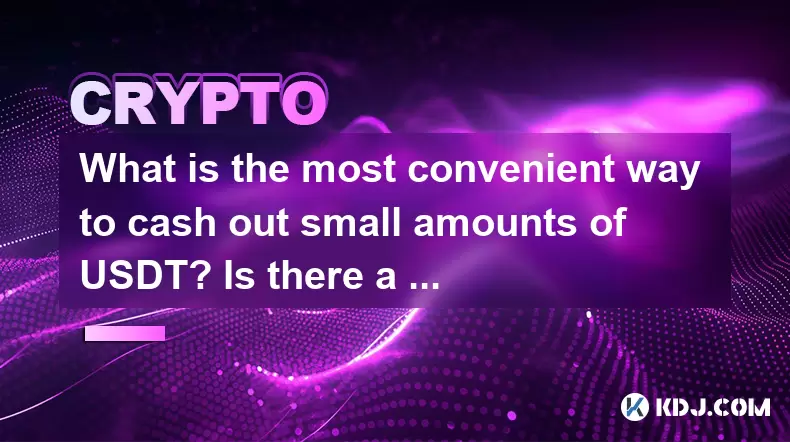
What is the most convenient way to cash out small amounts of USDT? Is there a shortcut?
Jun 11,2025 at 11:00pm
Understanding the Need to Cash Out Small USDT AmountsCashing out small amounts of USDT can be a challenge for many crypto users. Traditional methods o...
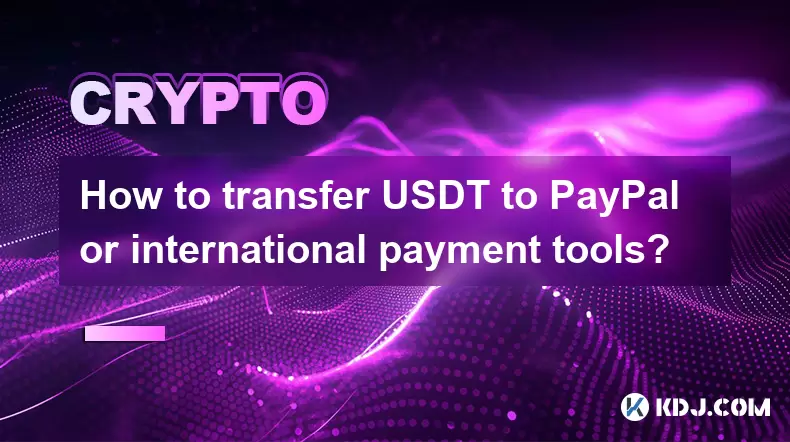
How to transfer USDT to PayPal or international payment tools?
Jun 15,2025 at 05:28am
Understanding the Basics of USDT and PayPal IntegrationUSDT (Tether) is a stablecoin pegged to the US dollar, offering blockchain-based value transfer...
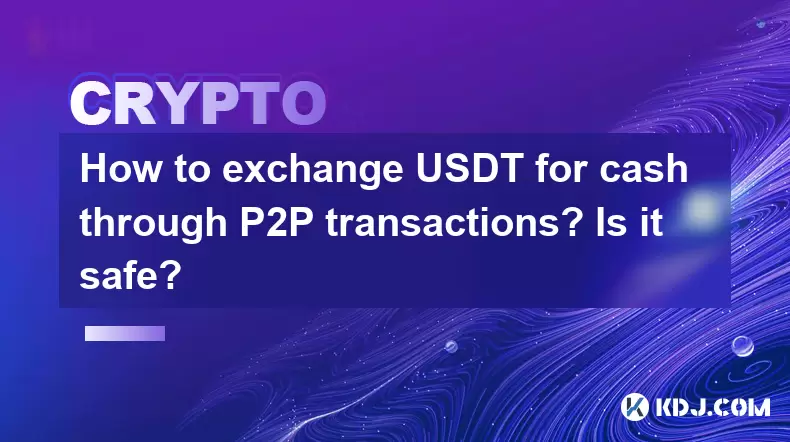
How to exchange USDT for cash through P2P transactions? Is it safe?
Jun 18,2025 at 07:56am
Understanding USDT and P2P TransactionsTether (USDT) is a stablecoin pegged to the value of the US dollar, making it a popular choice for users who wa...
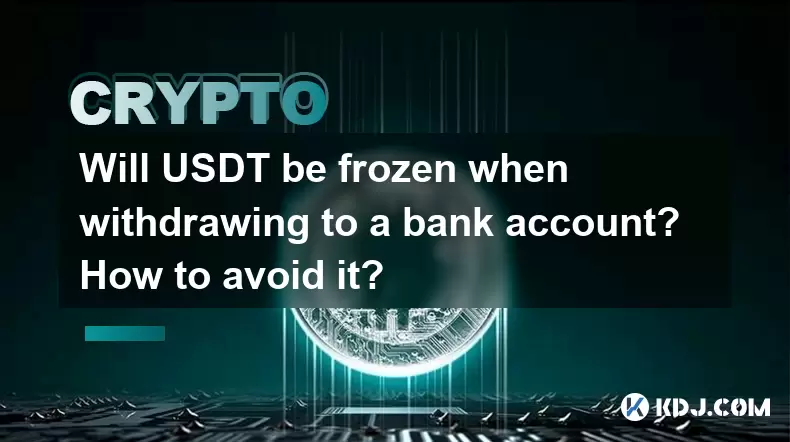
Will USDT be frozen when withdrawing to a bank account? How to avoid it?
Jun 15,2025 at 10:03am
Understanding USDT Withdrawals and Bank Account Freezing RisksWhen users decide to withdraw USDT (Tether) to a bank account, one of the most common co...
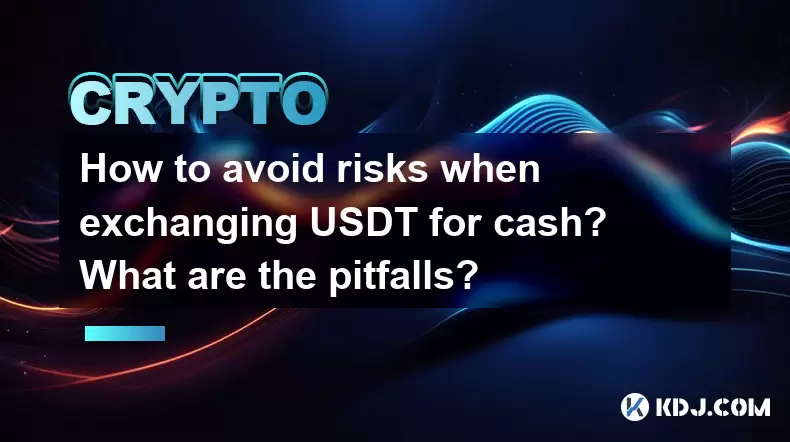
How to avoid risks when exchanging USDT for cash? What are the pitfalls?
Jun 11,2025 at 08:14pm
Understanding the Risks of Exchanging USDT for CashWhen exchanging USDT (Tether) for cash, users must be aware of the potential risks involved. As a s...

How to choose a reliable USDT exchange service provider? How to identify?
Jun 12,2025 at 03:15pm
Understanding the Role of USDT in Cryptocurrency TradingUSDT (Tether) is one of the most widely used stablecoins in the cryptocurrency market. It is d...

What is the most convenient way to cash out small amounts of USDT? Is there a shortcut?
Jun 11,2025 at 11:00pm
Understanding the Need to Cash Out Small USDT AmountsCashing out small amounts of USDT can be a challenge for many crypto users. Traditional methods o...

How to transfer USDT to PayPal or international payment tools?
Jun 15,2025 at 05:28am
Understanding the Basics of USDT and PayPal IntegrationUSDT (Tether) is a stablecoin pegged to the US dollar, offering blockchain-based value transfer...

How to exchange USDT for cash through P2P transactions? Is it safe?
Jun 18,2025 at 07:56am
Understanding USDT and P2P TransactionsTether (USDT) is a stablecoin pegged to the value of the US dollar, making it a popular choice for users who wa...

Will USDT be frozen when withdrawing to a bank account? How to avoid it?
Jun 15,2025 at 10:03am
Understanding USDT Withdrawals and Bank Account Freezing RisksWhen users decide to withdraw USDT (Tether) to a bank account, one of the most common co...

How to avoid risks when exchanging USDT for cash? What are the pitfalls?
Jun 11,2025 at 08:14pm
Understanding the Risks of Exchanging USDT for CashWhen exchanging USDT (Tether) for cash, users must be aware of the potential risks involved. As a s...
See all articles





















